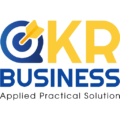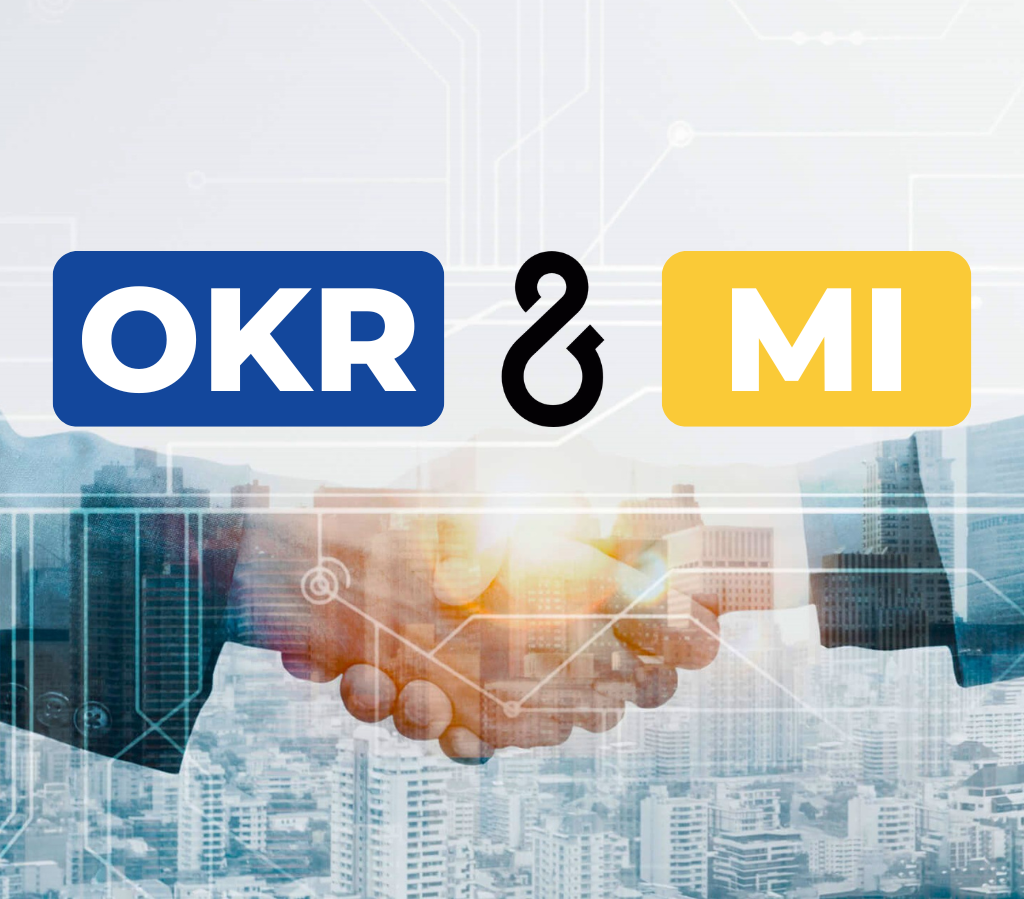Have you heard of OKRs (Objectives and Key Results)? It’s a goal management system used by many successful companies worldwide, and OKR.Business also has a huge inspiration from its core principles. But did you know that there are many misconceptions about OKRs that could be holding you back from reaching your full potential?
This article will expose 10 of the most common misunderstandings in applying OKR management principles and give you a new, fresh perspective on this powerful tool. Get ready to discover how understanding and applying OKRs appropriately can supercharge your personal and professional growth! Let’s go.

Unlock the hidden potential of individuals and organizations with OKRs
Misunderstanding #1: OKRs are just about setting goals
The Myth: Many people think OKRs are simply about setting goals.
The Reality: OKRs are more than just a goal-setting tool; they’re a management philosophy. They focus on creating inspiring goals that foster engagement and motivate the entire organization. OKRs connect individual goals to the company’s overall objectives, creating alignment and focus for achieving success.
Example: Instead of simply setting a goal like “Increase revenue by 20% next quarter,” a company using OKRs might create a goal like “Become the most customer-centric company in the X market for Y needs.” This goal is not only clear and specific but also inspiring and motivating, encouraging everyone to contribute.
Misunderstanding #2: OKRs are a One-size-fits-all Solution
The Myth: OKRs can be easily implemented and will work for every organization.
The Reality: OKRs are not a magic bullet. For OKRs to be effective, there needs to be agreement, commitment, and trust among team members. In particular, support and guidance from top leadership are crucial for successful OKR implementation. Without this support and alignment, OKRs may not reach their full potential.
Example: A company decides to adopt OKRs without proper preparation in terms of culture and mindset. Managers don’t truly believe in OKRs and don’t spend enough time guiding and developing their employees. As a result, OKRs are not taken seriously and fail to deliver the expected results.

OKRs effectively drive both personal goals and career growth
Misunderstanding #3: OKRs are only for managers
The Myth: OKRs are only a tool for managers to set goals and evaluate employees.
The Reality: OKRs are a performance management tool for everyone in the organization, from top executives to entry-level employees. OKRs help everyone understand their goals, how they contribute to the company’s overall objectives, and how to measure their success.
Example: A marketing employee might set a personal OKR related to increasing website traffic or generating a certain number of leads. This OKR would align with the marketing department’s OKRs and the company’s overall OKRs, creating alignment and synergy throughout the organization.
Misunderstanding #4: OKRs Replace Other Performance Evaluations
The Myth: OKRs can completely replace traditional performance evaluation methods like annual reviews or 360-degree feedback.
The Reality: OKRs should not be seen as a complete replacement for traditional performance evaluation methods. Instead, they should be used as a complementary tool, providing detailed and continuous information about employee performance, making the evaluation process more objective and comprehensive.
Example: A company can use OKRs to track employees’ progress towards their goals on a quarterly or monthly basis, while still conducting annual performance reviews to assess their overall skills, attitude, and contributions.

“Success is a journey, not just a destination”
Misunderstanding #5: Success Means Achieving 100% of Your OKRs
The Myth: If you don’t achieve all of your objectives and key results, you’ve failed at OKRs.
The Reality: OKRs encourage setting ambitious goals that may even exceed your current capabilities. The purpose is to foster innovation and push boundaries. Not achieving 100% of your OKRs doesn’t mean you’ve failed. What matters is the progress you’ve made and the lessons you’ve learned along the way.
Example: A product team sets a goal to “Increase customer satisfaction rate from 50% to 110%.” Interestingly, 110% means 100% customer satisfaction and an additional 10% spread to new customers. However, by the end of the quarter, they only achieve 90%. This isn’t a failure, but an opportunity for the team to reflect on the process, identify the root causes, and come up with solutions for improvement in the next quarter.
Misunderstanding #6: OKRs Should Only Be Set Annually
The Myth: OKRs should be established annually, following the traditional business cycle.
The Reality: In the modern business environment, especially after the COVID-19 pandemic, things change at a dizzying pace. In the context of VUCA (Volatility, Uncertainty, Complexity, and Ambiguity) to BANI (Brittle, Anxious, Nonlinear, and Incomprehensible), applying OKR management principles should be done in shorter cycles, usually quarterly or even monthly, so that businesses can flexibly adapt to market changes and the rapid development of AI technology. The core of OKR management principles is the flexibility to adapt and not be rigid to find and pursue as always what matters the most to the organization at any given time.
Example: A technology company is developing a new application. If they only set OKRs annually, they might miss the opportunity to capture the latest trends or respond promptly to user feedback. Even before the product is completed and launched, significant changes like AI or a more complete solution might have been released. Thus, if the company’s leadership is not willing to embrace change and update in a timely manner, their product is likely to face a high risk when launched because it has not been able to meet market demand and competitor competition.

Agility and adaptability are key to achieving long-term success
Misunderstanding #7: Not Achieving OKRs Means Incompetence
The Myth: If you don’t achieve your OKRs, it’s because of a lack of competence in the team or individual.
The Reality: OKRs are not ordinary goals. They are often set to help individuals and teams reach new heights and deliver significant value. They aim to inspire “transformation” in both literal and figurative senses for the entire organization. Therefore, this process is not easy, and not everyone can reap immediate rewards. The key for OKR practitioners is continuous improvement and becoming a better version of themselves every day.
Example: A company sets a goal to “Increase sales by 500% within 6 months in the northern market.” However, during the implementation process, OKRs are not continuously met as the recorded growth rate is only 35%. Interestingly, 35% is a dream number for many businesses. So, in the final OKR review session, despite not achieving the set goal, the company has indeed made significant progress, and the whole team works together to find ways to continuously increase it in the next OKR cycle.
Misunderstanding #8: OKRs Are Just Management’s Belief
The Myth: OKRs are just another (new) tool that bosses bring in to burden employees with more work.
The Reality: OKRs should be understood as a set of principles for goal management that help any individual or organization who wants to optimize resources, focus on developing what’s “important” (or vital) instead of spreading themselves too thin and not having enough power to create breakthroughs. OKRs help everyone understand their goals, how they contribute to the company’s overall objectives, and how to measure their success. Moreover, the evidence of successful OKR implementation is often seen in individuals and businesses with 10x or more growth in a much shorter time compared to traditional thinking and working methods. The benefits are worth the effort.
Example: Employees at two companies in the same field, company A only applies standard goal setting and review rules, focusing only on achieving or not achieving assigned results, and employees are always in a stressful situation, finding ways to achieve “numbers” within a given timeframe. Meanwhile, company B applies OKRs in parallel, and even though the assigned results are not achieved, the team is always encouraged and recognized for their efforts throughout the process, helping them gain more confidence and become increasingly attached to and grow with the company.

Organizational success is built on each and individual growth
Misunderstanding #9: OKRs Lead to Unhealthy Competition
The Myth: OKRs will lead to unhealthy competition between individuals and teams within the organization.
The Reality: OKRs are designed to promote collaboration and teamwork. When implemented correctly, OKRs encourage individuals to work together towards common goals, share knowledge, and support each other to achieve success.
Example: Instead of setting individual OKRs for each salesperson, a company can set a shared OKR for the entire team, encouraging them to collaborate to achieve a common sales target. This creates a positive working environment where everyone strives together for a common goal.
Misunderstanding #10: OKRs Only Focus on Results
The Myth: OKRs only evaluate through achieving final results, ignoring the process.
The Reality: OKRs are not only concerned with the final results but also focus on the learning and development process when striving to achieve the set goals. When applying OKRs correctly, businesses will focus on encouraging continuous learning, experimentation, and improvement. Success is not only about achieving goals but also about the lessons learned and the growth of each individual and team within that organization.
Example: An employee’s OKR might be to “Improve communication skills by attending a 4-session communication course and practicing presentations in front of the group for 10 hours.” This OKR not only focuses on the outcome (improving communication skills) but also emphasizes the learning and development process (attending the course and practicing).

OKRs – The right-fit missing piece for leaders to balance results with development.
OKRs are such a powerful management principle and tool. However, to fully unleash their potential for individuals and organizations, we need to understand them clearly and avoid common misconceptions. By applying OKRs flexibly and appropriately to each specific situation, we can create a positive work environment where everyone can grow together and achieve outstanding success.










